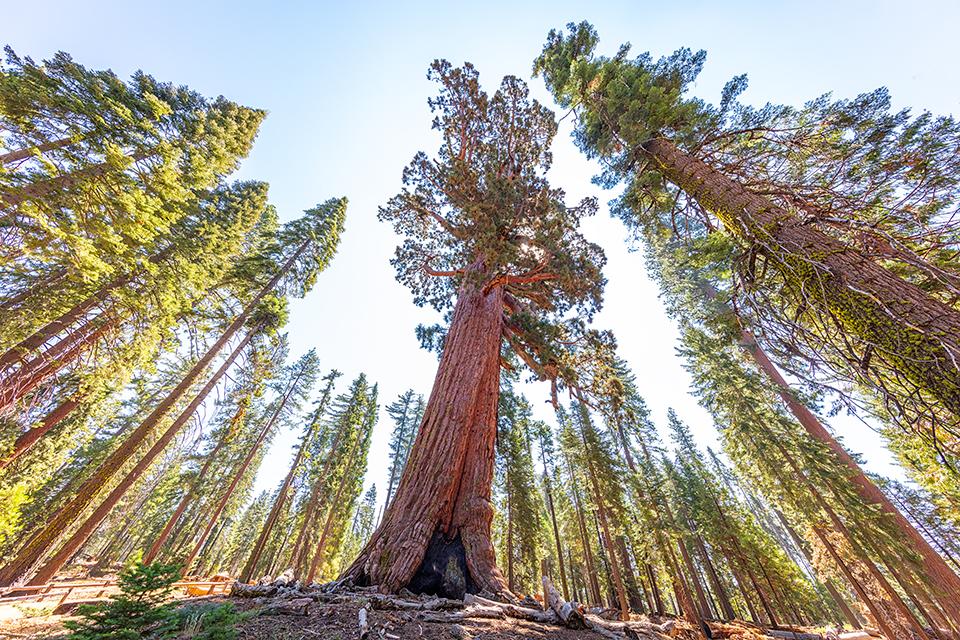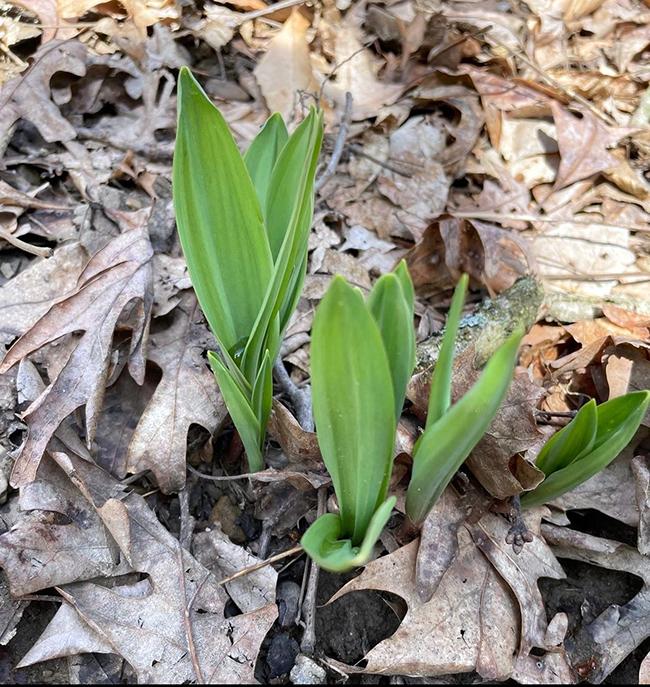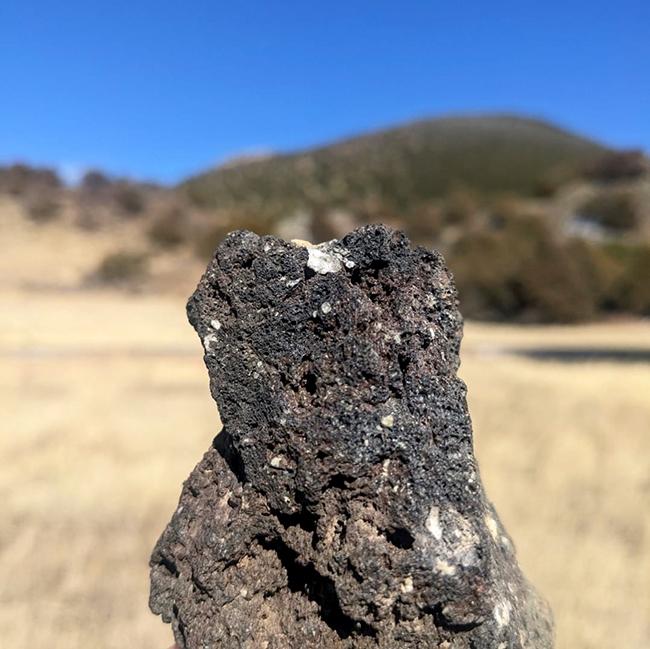
A strip of green across the steamy barren landscape of Porcelain Basin, Yellowstone National Park / Rebecca Latson
With 423 units in the National Park System, there will always be plenty to learn. So, test your national parks knowledge and see how much you know before checking the answers at the bottom of the page.
1. As you walk the boardwalk along Yellowstone National Park’s Porcelain Basin, you might notice a brilliant green curvy strip of water running over the steamy, barren-looking landscape. The green in the water is Cyanidium, a ___.
a) Green algae
b) Red algae
c) Blue algae
d) Yellow algae

Exploring by kayak in Glacier Bay National Park and Preserve / NPS - K. Smith
2. Thinking of a little kayaking at Glacier Bay National Park and Preserve? According to the National Park Service, the majority of people travel to this place via boat. Tides in Glacier Bay can vary as much as ___ between high and low tides.
a) 15 feet
b) 20 feet
c) 25 feet
d) 30 feet

A small gift from Pele, Hawai'i Volcanoes National Park / NPS - M. Newman
3. While wandering within Hawai’i Volcanoes National Park, you might look down and see delicate volcanic glass in the form of drops or twisted lightning shapes like that in the photo above. These drops of volcanic glass are nicknamed ___.
a) Pele’s tears
b) Pele’s hair
c) Pele’s glass
d) Pele’s mascara

Grizzly Giant in Mariposa Grove, Yosemite National Park / Rebecca Latson
4. Yosemite National Park is home to several groves of giant sequoia trees: Mariposa Grove, Merced Grove, and Tuolumne Grove. True or False: Mariposa Grove is the smallest grove within the park.
a) True
b) False

Clark's Nutcracker, Lewis and Clark National Historic Trail / NPS - Jim Ecklund
5. If you are exploring along the Lewis and Clark National Historic Trail, you might come across an inquisitive little gray bird called the Clark’s Nutcracker, a member of the crow family. True or False: The male Clark’s Nutcracker helps incubate the eggs.
a) True
b) False
6. At what is now Bandelier National Monument in New Mexico, “the height of Frijoles Canyon’s occupation was likely between 1325 – 1550 CE (Common or Current Era), when archaeologists believe around ___ Ancestral Pueblo people occupied the village of Tyuoyni and the cliff dwellings that rise above it.
a) 500
b) 600
c) 700
d) 800

What is this phenomenon called? Haleakalā National Park / National Park Service
7. If you’ve ever hiked along Haleakalā Crater in Haleakalā National Park on a cloudy day, you might have seen an interesting phenomenon of a circular rainbow with a human-shaped shadow beneath it, known as the ____.
a) Holy halo
b) Sun dog
c) Brocken spectre
d) Cloud halo

Soaptree yucca in White Sands National Park / National Park Service
8. While hiking the white gypsum sands of White Sands National Park in New Mexico, you might come across the park’s iconic soaptree yucca. “The plant will send up a long stalk that flowers in late spring, then holds the fruit and seeds up for the wind to disperse.” True or false: the soaptree yucca is only pollinated by the yucca moth and not by any other creature.”
a) True
b) False

Spring has sprung in Cuyahoga Valley National Park when you see this plant / National Park Service
9. Spring has sprung when you see the plant in the image above start to come up from the ground in Cuyahoga Valley National Park. This native garlic is called _____.
a) Ramps
b) Posts
c) Greenies
d) Wild ginger
10. While hiking the Appalachian National Scenic Trail, you may come across a small puddle full of tadpoles. Has that puddle always been there? Maybe, maybe not. These “temporary, isolated water bodies” are called ___.
a) Pothole ponds
b) Vernal pools
c) Frog puddles
d) Shadow pools
Trivia

Green sphinx moth, Pinnacles National Park / National Park Service
“The moths of Pinnacles National Park range in size from smaller than a gnat to larger than a hummingbird. Most fly at night, but a fair number are active only in daylight. Most are drab in color, at least when settled, but many have brightly colored hind wings that are evident in flight. Even most of the drab-colored moths have intricate patterns on their wings. The Pacific green sphinx moth shown here is a short and stout moth in the Sphingidae family. Unlike most moths, it doesn’t expand its wings until after it has emerged from its old pupa skin and burrowed to the surface,” which can be from a depth of six inches. To learn more about the moths of this park, click here.

Xenoliths in the basalt, Capulin Volcano National Monument / National Park Service
The lava that erupted from Capulin Volcano in Capulin Volcano National Monument is basalt, an igneous (volcanic) rock which cools too quickly for large crystals to form. As you hike in this national monument, you might, however, come across “sparkly” basalt. What’s up with that? The sparkly spots are composed of sandstone and are called xenocrysts or xenoliths. These are “inclusions of foreign rock and crystals that were ripped from the sandstone bedrock by the rising magma during the eruption of Capulin Volcano.”

Saline Flats, Death Valley National Park / National Park Service
Because salt was such a scarce and valuable mineral in many places, the salt from Death Valley National Park was “historically mined and exported from the area. In 1911, the Saline Valley Salt Company built an aerial electric tramway from Saline Valley that spanned 7,600 feet up and over the Inyo Mountains and continued down 5,100 feet on the other side to Owens Valley narrow gauge railroad to the west. The salt in Death Valley was especially pure but the cost of extracting it out of the remote valley was too great and operations ceased in 1933. Visitors to the park today can still see remains of this elaborate salt tram intersecting Saline Valley Road and in the Inyo Mountains.”
Quiz Answers
1b
Cyanidium is a red algae that doesn’t product red pigment. It’s found in acidic hot springs which means it loves living in Norris Basin, which is considered more acidic than any of the other geyser basins within Yellowstone National Park.
2c
Tides in Glacier Bay can vary as much as 25 feet between high and low tides. To learn more about boating in this national park and preserve, click here.
3a
“Pele’s tears are small jet black pieces of solidified lava drops which are formed when molten material fuse into tear-like drops of volcanic glass. Pele’s tears are often found on the other end of a strand of Pele’s hair during a lava-driven eruption. The piece you see in the photo was ejected during the Maunaulu eruption between 1969-1974 along the East Rift Zone of Kilauea.
4b False
“Merced Grove is the smallest grove in the park and was once a sightseeing stop along the Old Coulterville toll road used to access Yosemite Valley. This is now a quiet hiking trail with an old ranger cabin that is listed on the National Register of Historic Places.”
5a True
“The male Clark’s Nutcracker actually develops a brood patch on its chest, just like the female, and takes his turn keeping the eggs warm while the female goes off to find seeds from her caches.” FYI, when William Clark saw this bird for the first time in 1805, he thought it was a woodpecker and later collected a specimen of this bird to take back with the expedition on the return trip home.
6c
“Archaeologists believe around 700 Ancestral Pueblo people occupied the village of Tyuoyni and the cliff dwellings that rise above it. There are several ways archaeologists can try to estimate these past populations. In the southwest, many researchers will count the number of residential (or household) units in a site and guess how many people would have lived in each of these households based on historic and ethnographic reports. However, it is important to remember populations are not static – just like in cities and towns today, people are constantly coming and going.”
7c
According to Britannica.com, a Brocken spectre is the “enormously magnified shadow that an observer casts, when the Sun is low, upon the upper surfaces of clouds that are below the mountain upon which the observer stands. The apparent magnification of size of the shadow is an optical illusion that occurs when the shadow on relatively nearby clouds is judged by the observer to be at the same distance as faraway land objects seen through gaps in the clouds. The phenomenon is often observed on mountain peaks but is recorded in literature with special reference to the Brocken, a peak in the Harz Mountains in Germany where the Brocken spectre sometimes produces spectacular effects. The observer’s shadow is often surrounded by coloured bands or rings that are the result of the diffraction of sunlight by water droplets in the cloud. The phenomenon of rainbowlike bands around a shadow on a cloud is also commonly observed from airplanes flying in sunlight above a cloud layer.”
8a True
According to the NPS, the yucca moth (Tegeticula elatella) and the soaptree yucca “depend entirely on each other for success of future generations. The moth will only lay its eggs at the base of yucca flowers after pollinating it, and the fruit that develops around the eggs feed the moth larvae. The yucca is not pollinated by any other creature; it relies on yucca moths to produce viable seeds.”
9a
Allium tricoccum, commonly known as ramps, is one of many wildflowers that are popping up in Cuyahoga Valley National Park now that it’s spring.
10b
“Each spring, these temporary, isolated water bodies known as vernal pools are full of life and biodiversity, bringing together frogs, salamanders, and other wildlife species. These species rely on vernal pools for breeding habitats and food sources.” To learn more about vernal pools, click here.
References
In addition to information taken from the NPS websites, Instagram, and Facebook posts for these national parks, I also used the following reference(s).



Add comment